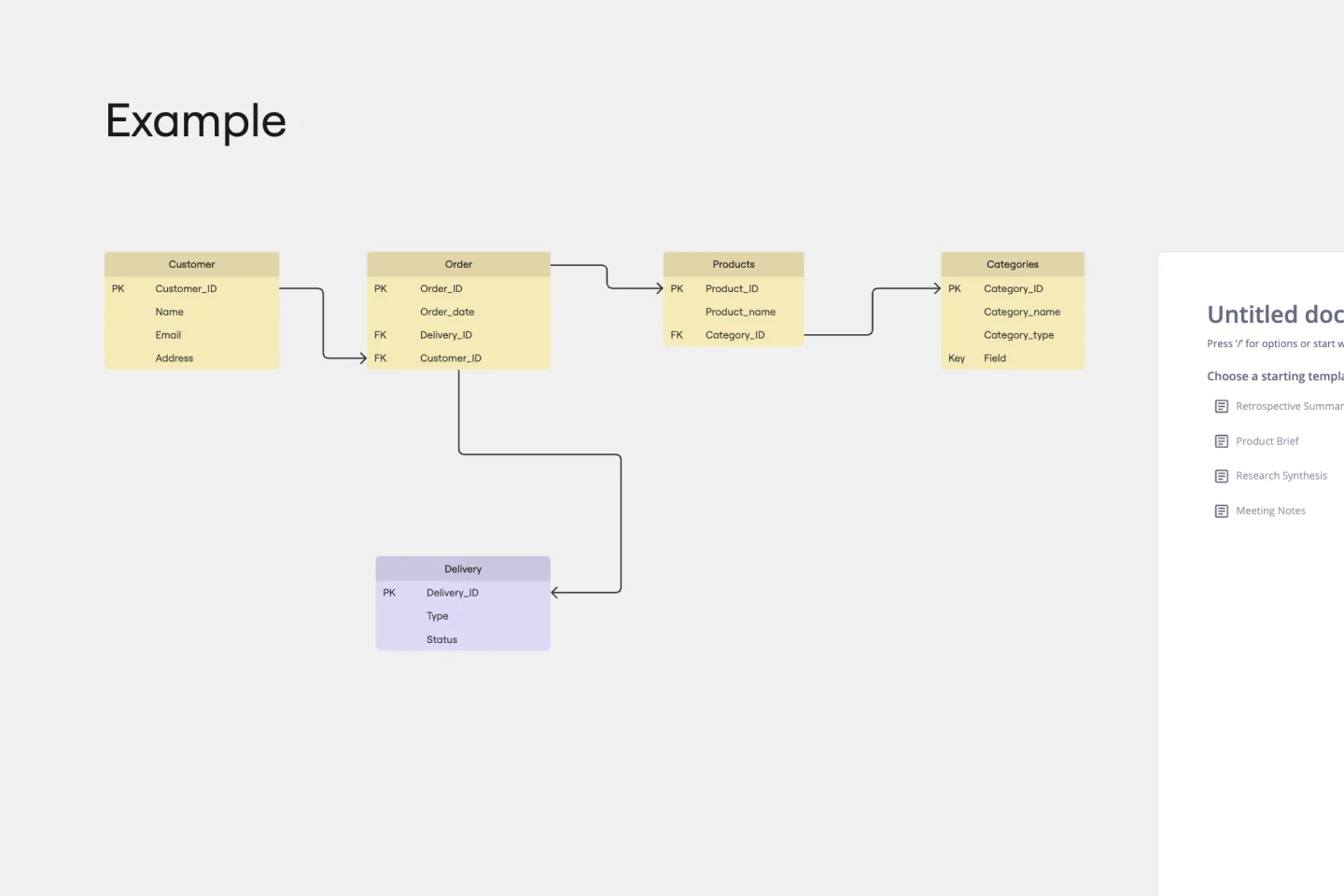About the ERD Healthcare Management System Template
The ERD Healthcare Management System template in Miro streamlines the process of creating and managing entity-relationship diagrams (ERDs) for healthcare management systems. This template helps in visualizing the complex relationships between various entities within a healthcare system, such as patients, healthcare providers, medical records, and billing information, making it an essential tool for database designers, system analysts, and healthcare administrators.
How to use the ERD Healthcare Management System Template
Customize the template: Once the template is open on your board, you can start customizing it to fit your specific healthcare management system needs. The template comes with pre-defined entities and relationships that are common in healthcare systems, but you can add, remove, or modify these elements as needed.
Define entities and relationships: Use the template to define all the entities in your healthcare management system and their attributes. Then, the relationships between these entities, such as one-to-many or many-to-many relationships, are established, and the nature of the relationship is annotated.
Collaborate and share: Miro’s collaborative features allow you to work on the ERD with team members in real time. You can also share your board with stakeholders and gather feedback directly within Miro.
Export and use: Once your ERD is complete, you can export it from Miro for further use in your project documentation or database design tools. Miro supports various export formats to accommodate different needs.
Why use the ERD Healthcare Management System Template
Efficiency: The template provides a quick starting point, saving time and effort in creating an ERD from scratch.
Clarity: Visualizing the relationships between entities in a healthcare management system can clarify system design and database structure, leading to better-informed decisions.
Collaboration: Miro’s platform facilitates collaboration, allowing multiple users to contribute to the ERD simultaneously, which is particularly useful for remote teams.
Customization: The template is flexible and can be customized to fit the specific requirements of any healthcare management system, regardless of its complexity.


